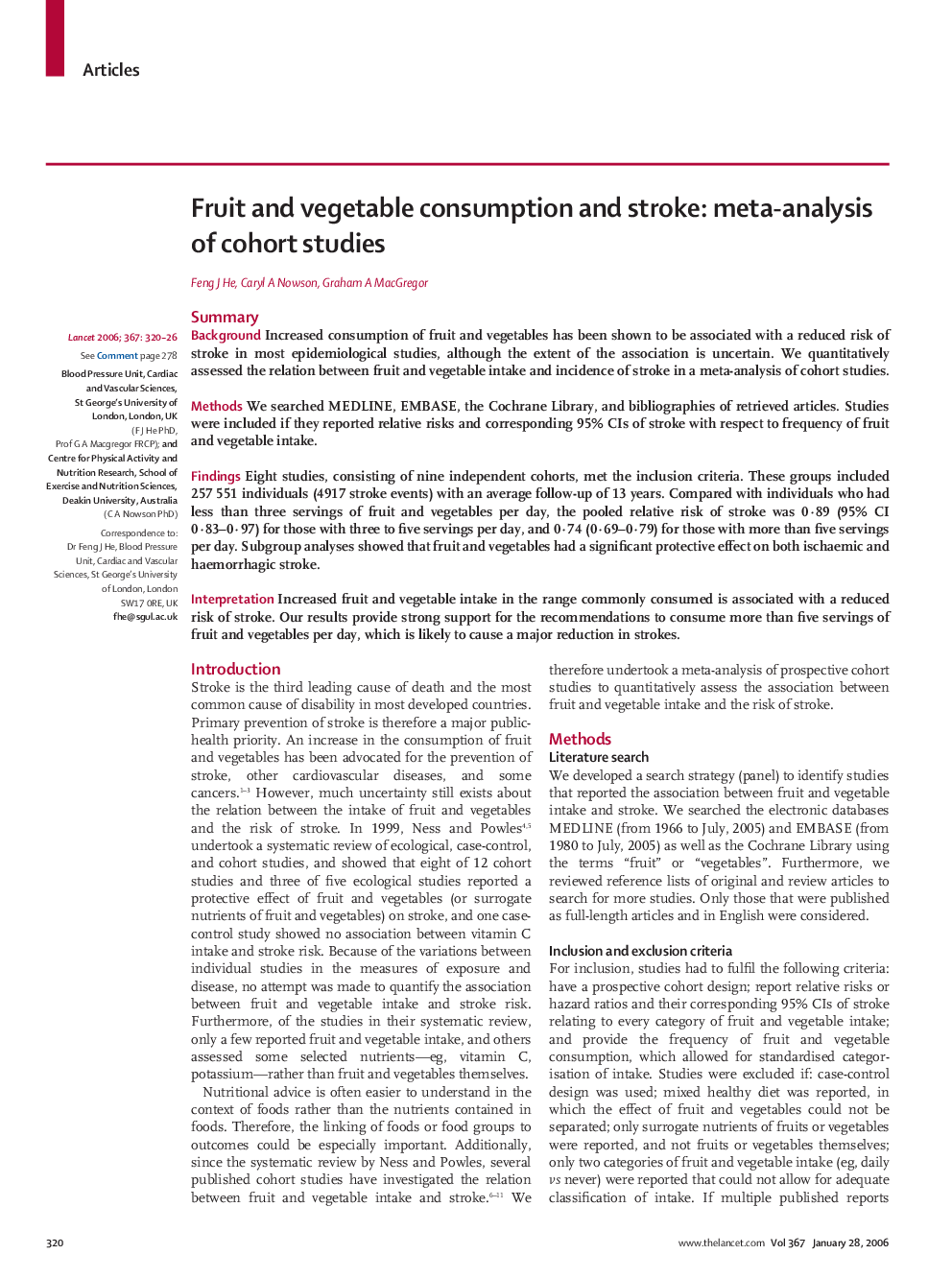| کد مقاله | کد نشریه | سال انتشار | مقاله انگلیسی | نسخه تمام متن |
|---|---|---|---|---|
| 3499087 | 1234464 | 2006 | 7 صفحه PDF | دانلود رایگان |

SummaryBackgroundIncreased consumption of fruit and vegetables has been shown to be associated with a reduced risk of stroke in most epidemiological studies, although the extent of the association is uncertain. We quantitatively assessed the relation between fruit and vegetable intake and incidence of stroke in a meta-analysis of cohort studies.MethodsWe searched MEDLINE, EMBASE, the Cochrane Library, and bibliographies of retrieved articles. Studies were included if they reported relative risks and corresponding 95% CIs of stroke with respect to frequency of fruit and vegetable intake.FindingsEight studies, consisting of nine independent cohorts, met the inclusion criteria. These groups included 257 551 individuals (4917 stroke events) with an average follow-up of 13 years. Compared with individuals who had less than three servings of fruit and vegetables per day, the pooled relative risk of stroke was 0·89 (95% CI 0·83–0·97) for those with three to five servings per day, and 0·74 (0·69–0·79) for those with more than five servings per day. Subgroup analyses showed that fruit and vegetables had a significant protective effect on both ischaemic and haemorrhagic stroke.InterpretationIncreased fruit and vegetable intake in the range commonly consumed is associated with a reduced risk of stroke. Our results provide strong support for the recommendations to consume more than five servings of fruit and vegetables per day, which is likely to cause a major reduction in strokes.
Journal: - Volume 367, Issue 9507, 28 January–3 February 2006, Pages 320–326